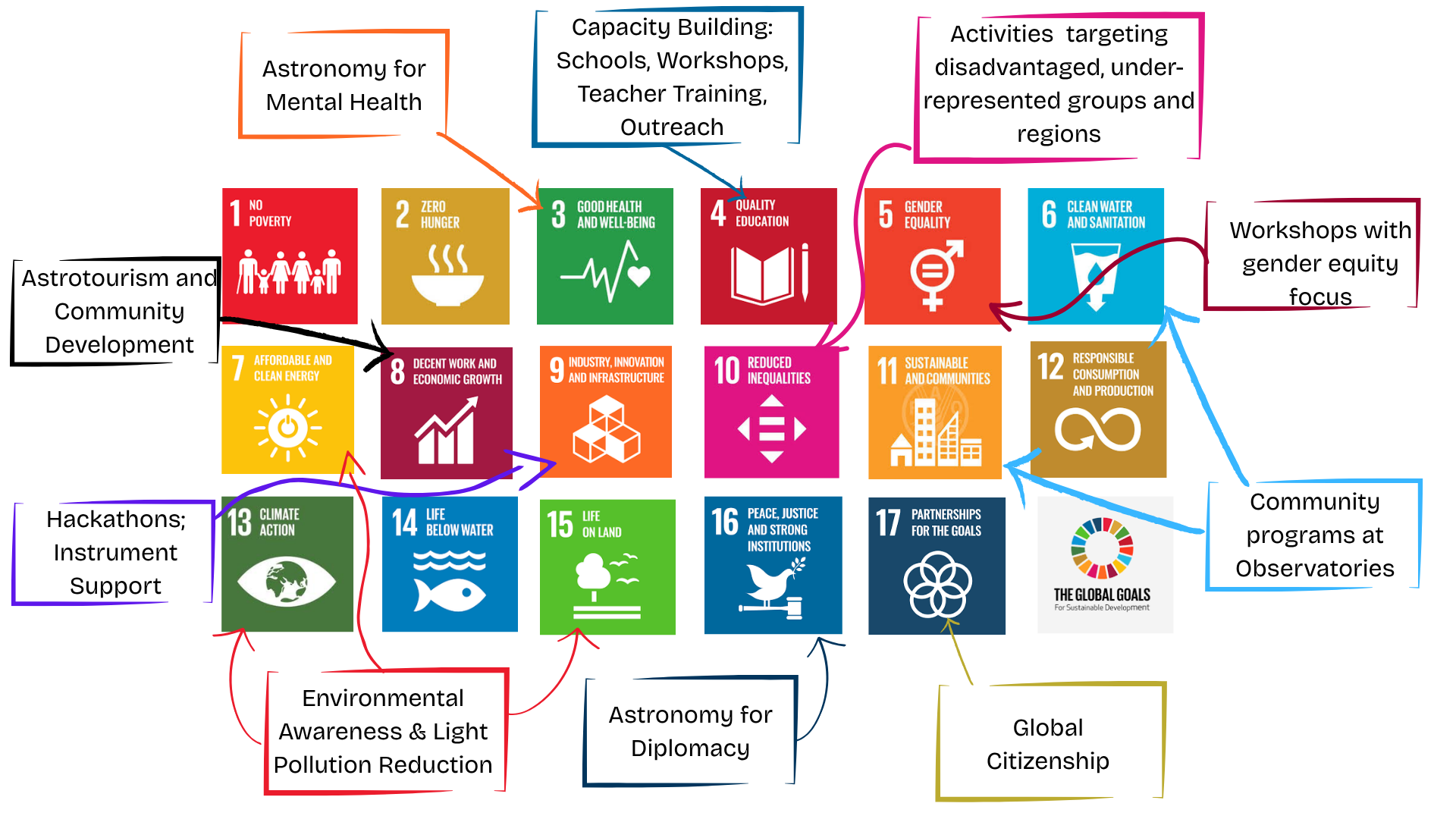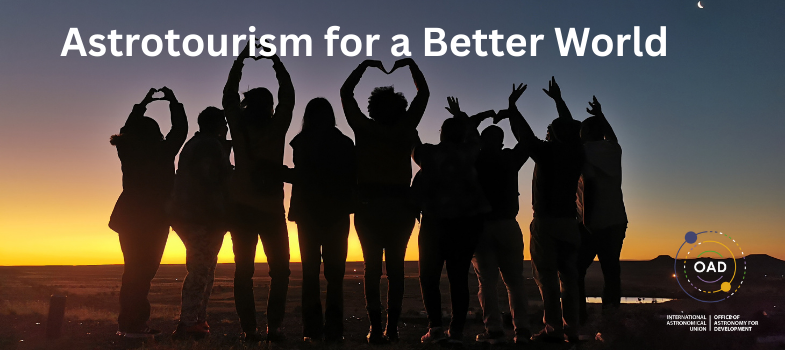Astronomy and Sustainable Development Goals
The Office of Astronomy for Development's goals are framed by the United Nations' Sustainable Development Goals (SDGs), which are a "set of globally adopted priorities to end poverty, preserve the planet and promote peace and prosperity for all"[1].

The OAD tries to encourage the astronomy community to work towards these goals through the (astronomy-based) interventions that they execute as IAU OAD funded projects. It can be difficult to conceptualise how astronomy, an esoteric and specialised science, can contribute to the very immediate and real challenges facing society today.
Astronomy and the SDGs
Astronomy is more than science - it’s a bridge across disciplines, cultures, and technologies, making it a versatile tool for tackling global development challenges.
Some examples of how past funded projects have attempted to do this are illustrated below.
Examples from previous OAD projects
The OAD funds and coordinates projects that aim to use astronomy to impact on one or more of the UN Sustainable Development Goals. It may not be obvious to everyone how the tools, methods and content of the field of Astronomy are relevant to the SDGs. The OAD has funded programmes that address at least 13 of the 17 SDGs thus far.
-
Many OAD funded projects have focused on capacity building in education by conducting workshops, schools, training etc. targeting especially those communities and regions which are disadvantaged or under-represented. These actions directly impact on SDG #4 Quality Education and SDG #10 Reduced Inequalities. Projects have also used astronomy at school and university level to teach skills in programming, data science, mathematics etc. Examples: Astronomy for Literacy, Madagascar Astronomy Python Workshop, Astrolab, Big Data in Astronomy for Social Innovation, Astronomy for Visually Impaired
-
Light pollution is not just a challenge for astronomy but also affects living things. The Dark Skies Rangers program raised awareness of the impact of light pollution and energy efficient lighting (which relates to SDG #7 Affordable and Clean Energy). Example: Dark Skies Outreach to sub-saharan Africa
-
Some projects have included a focus on SDG #5 Gender Equality. Bridging the gender divide is especially important in STEM fields and astronomy has been used as a catalyst in this process. Example: Girls Astronomy Camp in Nigeria

-
Community programs run by an astronomical observatory have encouraged sustainable use of resources such as water and energy. In this case astronomy aims to contribute in some way to SDG #6 Clean Water and Sanitation and SDG #11 Sustainable Cities and Communities. Example: Community Development around Timor Observatory in Indonesia
-
Astro-tourism has gained traction in recent years. The idea is that astronomical sites (historical & heritage sites, observatories, dark sky reserves etc.) can be systematically promoted as points of interest and work together with the tourism industry to contribute to the local economy. This relates to SDG #8 Decent Work and Economic Growth and SDG #9 Industry, Innovation and Infrastructure Examples: Development of Astro Tourism in South West Asia, Astronomy for Himalayan Livelihood Creation
-
Astronomy has been used in various contexts to bring people together. Taking it a step further, astronomy as a tool for diplomacy brings together communities separated by conflict. Example: Columba Hypatia: Astronomy for Peace relates to SDG #16 Peace, Justice and Strong Institutions
Astronomy continues to prove its unexpected but powerful links to SDGs - from education and technology transfer to cultural identity, conservation, and peace-building.
[1] "Sustainable Development Goals," United Nations Development Programme, Accessed 15 September 2025, http://www.undp.org/content/undp/en/home/sustainable-development-goals.html
